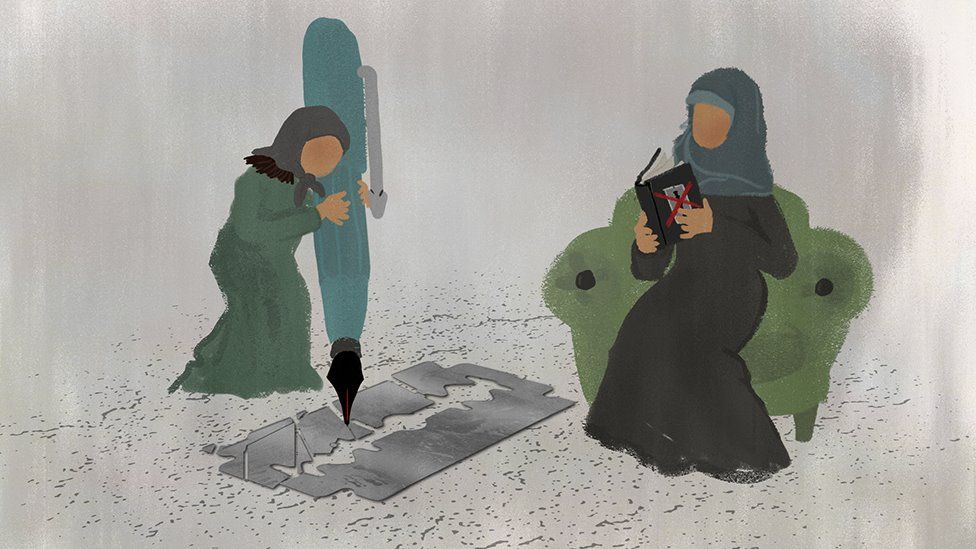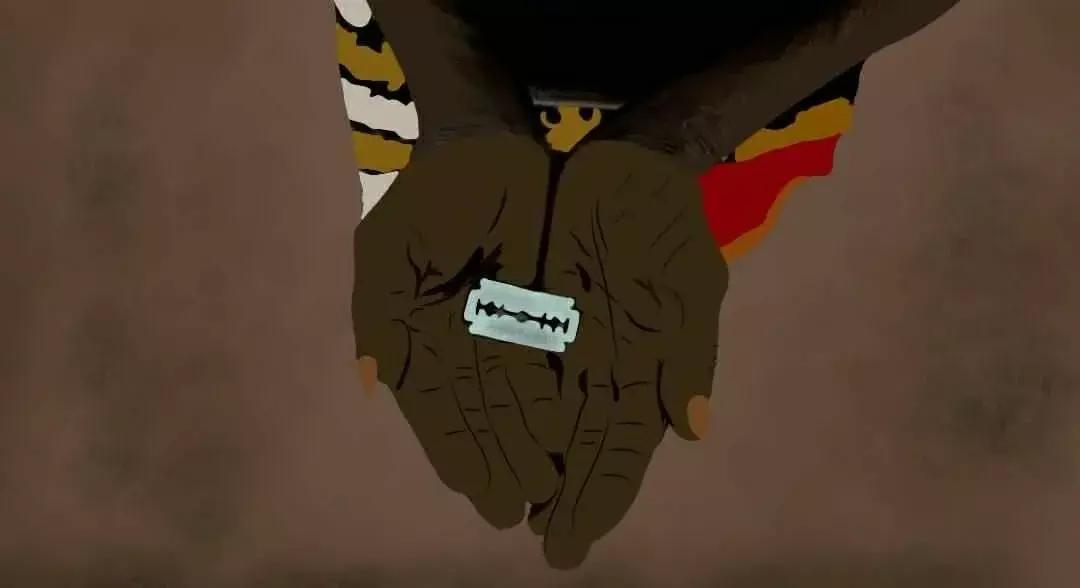
Every year on February 6, the world observes the International Day of Zero Tolerance for Female Genital Mutilation( FMG). Even today, female genital cutting or mutilation (FGC/M) is still practiced. However, even today, the majority of people in our nation and around the globe will be unaware of this barbaric act that is done to young girls in the wake of religious practice. It is still not widely known that it occurs in India, a gap that activists have been working diligently to address for decades through grassroots movements, awareness drives, and various digital tools.
According to the World Health Organization (WHO), FGM/C encompasses all procedures that involve partial or total removal of the external female genitalia, or other injury to the female genital organs for non-medical reasons. In addition to the long-lasting physical and psychological harm that FGM causes, the procedure also results in intense agony, excessive bleeding, and a risk of fever, infections, shock, or even death. In the long term, it can lead to vaginal and urinary issues, and it can even lead to complications during childbirth.
The cruel practice of female genital cutting or female genital mutilation (FGM) is mostly practiced among the Bohra Community in India. It is seen as a coming-of-age ritual or custom that is meant to maintain the “religious purity” of the female body by regulating and moderating sexual desires. FGM, or khatna as the Bohras refer to it, was long kept a forbidden topic that was never to be addressed. Even though the United Nations has deemed female genital mutilation to be a breach of human rights, there is still no prohibition in India, which is one reason why khatna persists.
In hospitals managed by the Bohra community, young females are still brought to perform the khatna. Government figures to determine the prevalence of FGM in India are currently unavailable. In 2017, the Ministry of Women and Child Development stated in answer that at present, there is no official data or study which supports the existence of FGM in India.
For years women have been fighting their own community members to stop the practice of female genital cutting (FGM). Despite the government’s persistent denials, the United Nations Human Rights Council (UNHRC) officially acknowledged its presence in India.
The World Health Organization’s (WHO) legal definition of FGM, its criminalization, and the creation of a national action plan to end the practice were recommended to the Indian government during the fourth cycle of India’s Universal Periodic Review (UPR).
In nations where FGM is prevalent, 26 out of 30 have rules that forbid this practice. The practice has persisted in secret despite these laws. This is primarily because of ineffective enforcement, ambiguous laws, and a lack of security for girls who might endure FGM. In order to achieve the Sustainable Development Goal (SDG) of ending FGM before 2030, the international community has come together. This has been done through greater advocacy, common ideals, activism, information sharing, and counseling.
Fear of Female Sexuality
FGM is carried out for a variety of causes, the fundamental notion is that female sexual experience is evil and should be dreaded and restrained. There are all such notions in some communities that if a girl is not cut, “she will become a prostitute” or that the clitoris is “haram ki boti,” the root of all social ills. While some see it as a ritual of passage into femininity, others think its purpose is to guarantee a woman’s chastity before marriage. Some cultures also believed that FGM could increase fertility, making a woman more appealing for marriage. Therefore, getting rid of it guarantees that women are clean and pure, which raises their appeal and dignity in society.
Outlawing the Practice of Female Genital Mutilation

There are rationales for the absence of laws outlawing the practice in the nation. The government’s refusal to recognize the practice’s prevalence in itself has hindered attempts to pass legislation outlawing it. A law in this regard is also viewed as a clash with the freedom of religion guaranteed by Articles 25 and 26 of the Constitution making it another obstacle to its passage.
Human rights campaigner Sunita Tiwari brought up the problem in a Public Interest Litigation that was filed in Apex Court in the year 2017. The PIL claims that the practice violates women’s rights to equity (as guaranteed by Article 14 of the Constitution of India), safety from gender-based discrimination (as guaranteed by Article 15), and right to life, personal dignity, and privacy (Article 21). Additionally, Tiwari’s attorney has argued that the Quran does not support the practice of FGM. In reality, it was acknowledged at the 1998 Al Azhar University in Egypt International Conference on Population and Reproductive Health in the Muslim World that detrimental practices like FGM result from a misinterpretation of Islamic principles.
However, the respondents in the case, who are being headed by the Dawoodi Bohra Women’s Association for Religious Freedom, have argued that “khatna” is the practice of circumcision to achieve “religious purity,” which is done by both males and women in the community and is, therefore, not sexist. The freedom to exercise one’s religion is protected by the Constitution’s Articles 25 and 26, and they oppose any attempts to outlaw it.
Progress on the Legal Front

The PIL was acknowledged in 2018 by a panel of judges chaired by the former Chief Justice of India, Ranjan Gogoi, who also voiced worry about the damaging effects of the practice. Since the cases have been brought by women,” according to Justice Gogoi, FGM must be examined through the prism of the Protection of Children from Sexual Offenses (POCSO) Act. The court further affirmed that FGM is not exempt from constitutional morality just because it is advocated as an “essential religious practice.”
According to a majority decision, the PIL was then combined with a number of petitions addressing women’s rights in relation to religious freedoms, including those regarding Muslim women’s entry into mosques, Hindu women’s entry into the Sabarimala temple, and Parsi women married to non-Parsis entering fire temples. The cases were sent to a seven-judge panel in November 2019.
FGM is not currently a crime under the Indian Penal Code (IPC), so reports are made under Section 326 (voluntarily causing grievous hurt), which carries a maximum ten-year jail sentence.
Constitutionality of Female Genital Mutilation

The Indian Constitution guarantees the people’s freedom of religion through Articles 25 and 26. However, in the interests of morality, public order, and health, the state may intervene in these basic liberties. As a result, the Supreme Court created the theory to outline how religion and the Constitution relate to one another. It was decided that the State could not control a practice considered “essential” to any religion. The Court noted that the basic principles upon which a religion is built and the practices that are important to its adherents are what constitutes religion’s essential components. The question of whether the lack of a specific practice would essentially change religion is how to decide whether a practice is an important component of religion.
In the present situation considering the question the fact that the practise has already been banned in many Muslim-majority nations and is not referenced in Islam’s holy book, the Quran, proves conclusively that FGM/C is not a necessary component of Islamic practice and cannot therefore be regarded as a fundamental aspect of the faith. FGM/C is extremely unsafe for women’s and girls’ health and can result in severe health problems. FGM/C cannot be excused on the grounds that the community’s customs. FGM/C is a violent, discriminatory, and harmful practice that affects women therefore the state can legislate against the said practice.
Conclusion
FGM is a blatant example of a gender-based human rights infraction that aims to restrict women’s freedom and intimacy. The deed is regarded as a form of torture and brutality against women and girls on a global scale. Although the majority of African nations have made the practice illegal, this does not go far enough because it is ingrained in their cultural and customary practices. The efforts must cover issues like FGM’s negative impacts and violations of human rights. Culture-related problems are delicate, so the first fight is to eradicate these traditional and cultural views by educating people sufficiently about them.
First, by empowering those who are already knowledgeable about the practice of FGM to spread that information to others, the practice will eventually be abolished. In order for them to assist others in their communities who are still performing FGM, women, and girls should also be helped by giving them the knowledge they need about the practice. A girl has been mutilated or is at risk of experiencing mutilation, and workers in the field of community development should be urged to report any instances they may suspect in their community to the officials and groups working to end the practice. It will be difficult as long as people continue to believe that FGC occurs for a good cause and that the practice is done for the girl’s welfare. Secondly, a law prohibiting the practice and proper implementation of the same will help in the eradication of Female Genital Mutilation.